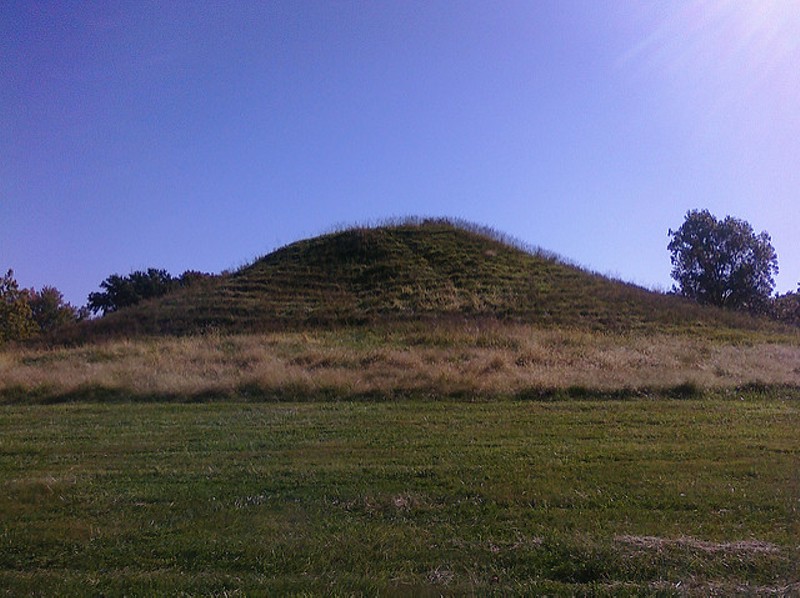
FLICKR/AARON PLEWKE
A mound in Cahokia, Illinois.
Once upon a time, the area just across the Mississippi River from modern-day St. Louis was the center of Western civilization, with as many as 20,000 residents clustered around a series of earthen mounds. UNESCO calls it the largest pre-Columbian settlement north of Mexico, and in its heyday (thought to be the year 1100 AD), nowhere was more popping.
So what happened? Forget for a moment St. Louis' well-documented twentieth-century malaise. What happened to the people of Cahokia nearly 900 years earlier?
A new study suggests answers to that question, and they're remarkably shitty. Published in the Proceedings of the National Academy of Sciences of the United States of America, and then brought to our attention by a cogent report first published online in Atlas Obscura, the study analyzes the ancient fecal matter found in the Cahokia area and puts the blame on climate change.
Yes, long before Al Gore was a glimmer in his senator daddy's eye, climate change robbed the St. Louis area of its greatness — and woe to the modern-day skeptic who'd fail to take note of the tale told by our predecessors' poop. Per the study's abstract, "[A] shift to decreased summer precipitation and a Mississippi River flood occurred circa 1150 CE, coinciding with a decline in the region’s population and a major climate transition." And the rest, as they say, is history.
So how'd they get all that from human waste?
The researchers knew that the more people, the more poop, the Atlas Obscura write-up notes. "So, they wondered, would poop dating from the time of the downturn contain any clues as to what was going on then?"
The story continues:
To investigate, White and his colleagues examined two sediment cores taken from Cahokia’s Horseshoe Lake. ... These cores contain “fecal stanols,” traces of the human poop that drifted off from the land and into the lake.
The team compared the levels of fecal stanols to those of other stanols that come from bacteria in the soil. They found that, the younger the sediments got, the heavier their oxygen concentrations—meaning that water was evaporating along with lighter forms of oxygen.
In other words, there was probably less precipitation during Cahokia’s later years—when we know from excavations that fewer people were living there—thus impeding local agriculture and causing the population to thin out.
Just as our modern-day Cassandras warn about these current perilous times, the drought that hit Cahokia was also apparently accompanied by flooding. As the abstract for the study concludes, "We find that Mississippi River flooding and warm season droughts detrimental to agriculture occurred circa (ca.) 1150 CE and possibly generated significant stress for Cahokia’s inhabitants."
Flooding and droughts? Stress? The ancient people of Cahokia really were just like us. Could their fate one day also befall this once-great city west of the river?
It's hard to say as of yet. But if you're an archaeologist reading this blog post in the year 2919, may we suggest making careful study of our local poop? We hear it can yield some remarkable clues.
We welcome tips and feedback. Email the author at [email protected]






